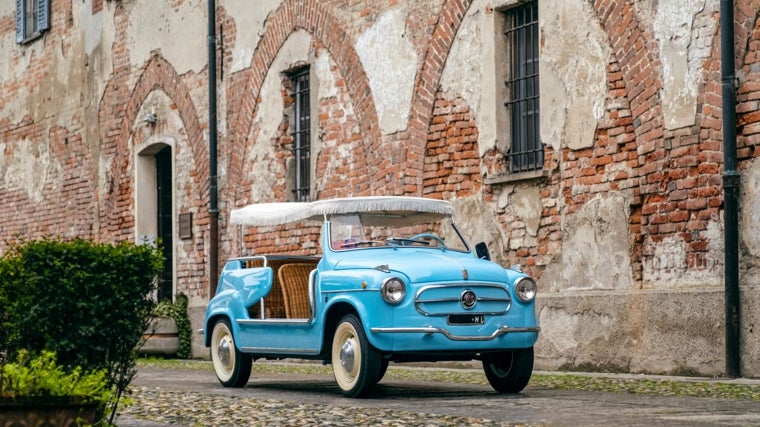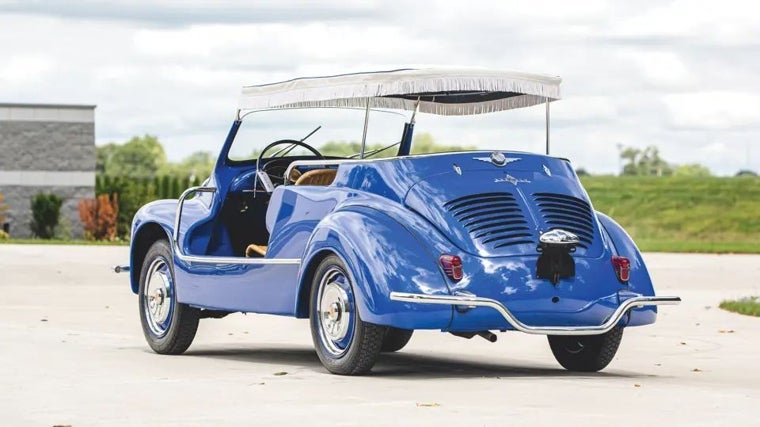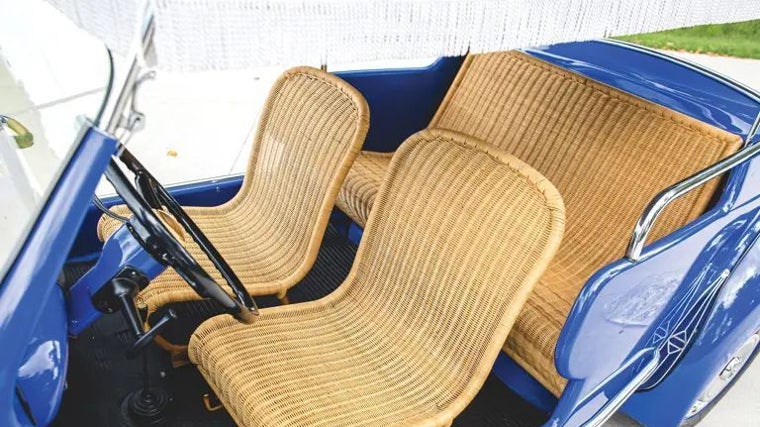Renault 4 CV Jolly: a time of glamour and tanned skin

And, the height of snobbery, small and modest cars exclusively transformed, without doors, without a roof, just a small awning instead... They were the beach cars, a story with vague origins although the Fiat Topolino Belvedere "Mare" is presented as the beginning of it, a car created in 1954 by the Fiat "Carrozeria Speciale" department commissioned by Gianni Agnelli.
"L'Avvocato," Gianni Agnelli, is at the center of this story. In addition to the Topolino "Mare," he is also responsible for the famous "Eden Roc" (of which three units were built), a Pininfarina design based on a Fiat Multipla. Initially called the "Spiaggina," it was presented at the 1956 Paris Motor Show.
Agnelli used it during his summer stays at the famous "Villa Léopolda", built by King Leopold II of Belgium in 1902, on an 8-hectare site between Nice and Monaco, or on occasions such as the Cannes Film Festival.
At a recent auction, one of the three units fetched over six hundred thousand euros…
 At the 1957 Turin Motor Show, Ghia presented the Jolly based on the Fiat 500 and, in the photo, the 600.
GS
At the 1957 Turin Motor Show, Ghia presented the Jolly based on the Fiat 500 and, in the photo, the 600.
GS
In 1957, at the Turin Motor Show, our story truly begins. The coachbuilder Ghia presented two beach cars on its stand, based on a Fiat model under the name "Jolly." It is said that this was an initiative of the company's director, Gigi Segre (inspired by the taxis of Capri and Ischia), which would be shaped by the young and brilliant designer Sergio Sartorelli. These were a 500 and a 600, and in both cases, the transformation followed the same guidelines. The roof disappeared, replaced by a fringed Surrey-striped awning, attached to the windshield at the front and by rods at the rear. The doors were also removed, and the original seats inside were replaced with wicker ones. Of those 500 and 600 Jollys, around 600 and 700 units were made respectively, including some based on the Multipla.
The Jolly quickly became an icon of the Dolce Vita during Italy's Golden Age. Agnelli gifted a few of these elegant beach buggies to his closest friends. Aristotle Onassis had one on his yacht, Lord Rothschild one on his Corfu estate, and Lyndon Johnson one on his Texas ranch.
 Ghia will produce fifty units of the Renault 4 CV Jolly.
GS
Ghia will produce fifty units of the Renault 4 CV Jolly.
GS
But in 1961, the last year of production of the Renault 4 CV or 4/4, conceived clandestinely during the German occupation of Paris and born in 1948, Ghia decided to build around fifty "Jolly" cars based on the diamond-shaped brand's model, most of which ended up in the United States. The car was fitted with a 747 cc engine.
The same principle as the Fiat 500 and 600 was followed. The car's original body was considerably modified. The roof and, in this case, all four doors were removed. To maintain the body's rigidity, the sills were considerably raised. Rear passengers were protected only by sheet metal plates extending from the B-pillar. The original bumpers were replaced with chrome-plated tubular ones, and in some cases, the wheels were replaced with those of the Dauphine.
 The original seats gave way to wicker ones, a key element in the Jolly
GS
The original seats gave way to wicker ones, a key element in the Jolly
GS
All Renault 4 CV Jollys, officially known as the "Resort Special," featured a canvas roof. This was attached to the cut-out windshield pillar at the front, while at the rear it was held in place by just two rods: impossible to go above 50 km/h, but important in a car where the point was to see and be seen.
And, of course, the original seats were replaced with wicker ones.
The front right-hand seat occupant had a chrome grab bar on the dashboard, and chrome bumper-like tubes were located at the top of the sills and around the rear seat to be used as handholds by the occupants.
Few of those who saw the first sandy-yellow Renault 4CVs (paint from the Afrika Corps, requisitioned by the French government, had been used) imagined that one day that car, suitably transformed, would rub shoulders with glamour…
And some might think that these Jollys were far from the luxury of the Ferraris, Maseratis, or Jaguars of the time, but the exclusivity of the few units manufactured, and the personality of their owners, makes them very special.
Lucky owners with a lifestyle that no longer occupies the covers of magazines hanging on newsstands, but rather historical articles posted online.
ABC.es





